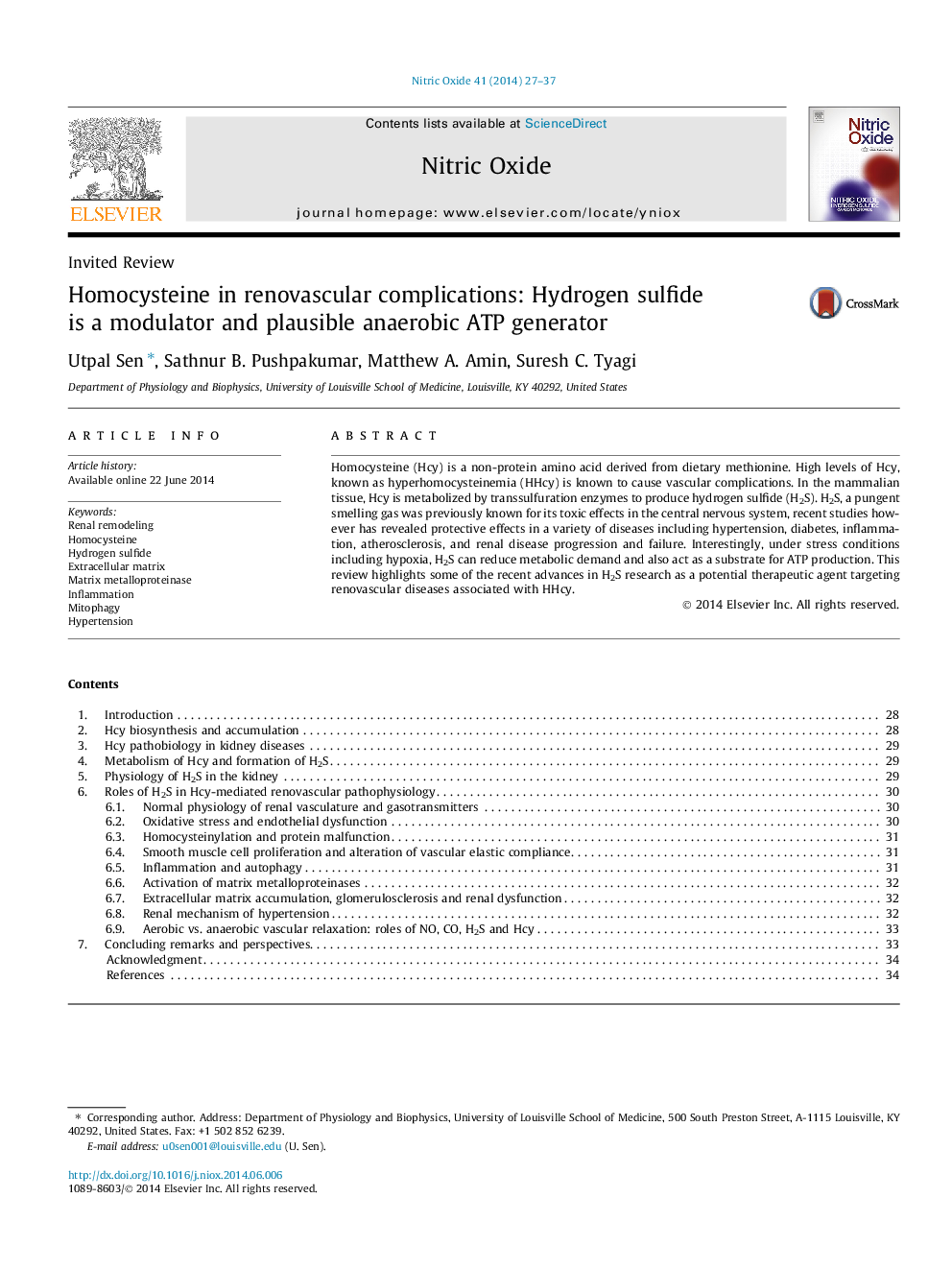| کد مقاله | کد نشریه | سال انتشار | مقاله انگلیسی | نسخه تمام متن |
|---|---|---|---|---|
| 2000674 | 1541618 | 2014 | 11 صفحه PDF | دانلود رایگان |

• Renal volume retention in chronic kidney disease increases plasma Hcy levels.
• Hcy metabolism produces physiologically important hydrogen sulfide molecule.
• H2S production is impaired in chronic kidney disease.
• H2S deficiency is associated with vascular dysfunction and matrix remodeling.
• H2S treatment mitigates HHcy-associated renal dysfunction.
Homocysteine (Hcy) is a non-protein amino acid derived from dietary methionine. High levels of Hcy, known as hyperhomocysteinemia (HHcy) is known to cause vascular complications. In the mammalian tissue, Hcy is metabolized by transsulfuration enzymes to produce hydrogen sulfide (H2S). H2S, a pungent smelling gas was previously known for its toxic effects in the central nervous system, recent studies however has revealed protective effects in a variety of diseases including hypertension, diabetes, inflammation, atherosclerosis, and renal disease progression and failure. Interestingly, under stress conditions including hypoxia, H2S can reduce metabolic demand and also act as a substrate for ATP production. This review highlights some of the recent advances in H2S research as a potential therapeutic agent targeting renovascular diseases associated with HHcy.
Journal: Nitric Oxide - Volume 41, 15 September 2014, Pages 27–37